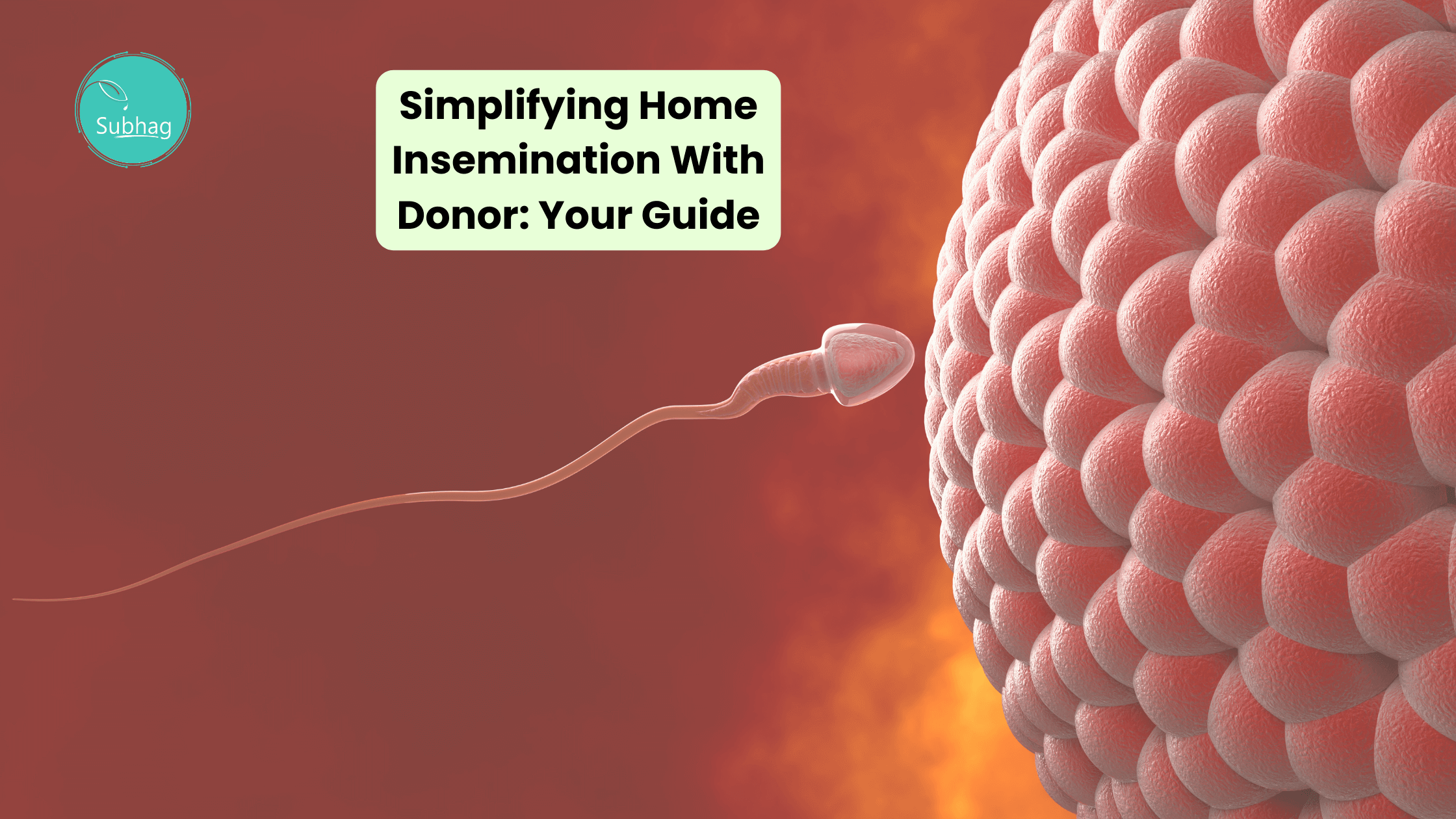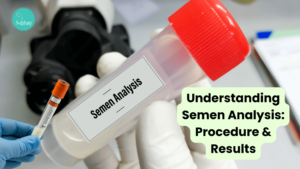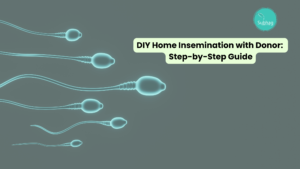What are the legal considerations of home insemination with donor?
Legal considerations of home insemination with donor include parental rights, donor agreements, and potential custody issues. Consulting with a legal professional to outline responsibilities and rights for all parties involved is crucial to avoid any legal complications or disputes in the future.
Key Highlights
- Intrauterine insemination andacervical insemination are two common methods of home insemination using donor sperm.
Home insemination can be an effective fertility treatment option for individuals and couples facing fertility issues.
- It is important to choose the right donor and consider legal considerations and consent before proceeding with home insemination.
- The home insemination process involves monitoring ovulation and using a home insemination kit to deposit the sperm sample into the vagina.
- Home insemination provides privacy, comfort, and lower costs compared to clinical procedures.
- It is important to understand the potential health risks and emotional impact associated with home insemination.
Introduction
Welcome to our blog on home insemination! If you or someone you know is considering home insemination as a fertility treatment option, you’ve come to the right place. In this blog, we will provide you with all the facts you need to know about home insemination, including how it works, the benefits and risks, and whether it may be the right choice for you.
Many individuals and couples facing fertility issues turn to home insemination as an alternative to clinical procedures such as intrauterine insemination (IUI) or in vitro fertilization (IVF).
Home insemination allows individuals and couples to perform the insemination process in the comfort and privacy of their own home, using donor sperm.
In this blog, we will explore the basics of home insemination, including the different methods, the process, and how it differs from clinical procedures.
We will also discuss important considerations such as choosing the right donor, legal aspects, and consent. Additionally, we will delve into the benefits and risks of home insemination, as well as success rates and factors that may influence the outcome.
By the end of this blog, you will have a comprehensive understanding of home insemination and be able to make an informed decision about whether it is the right option for you on your journey to parenthood.
Understanding Home Insemination
Home insemination refers to the process of performing an insemination procedure in the comfort and privacy of one’s own home, without the need for a clinical setting or healthcare provider.
It is a form of fertility treatment that allows individuals and couples to take control of their reproductive journey and increase their chances of conceiving.
The concept of home insemination is rooted in the understanding of human reproduction and the basic steps required for conception. In order to conceive, sperm needs to travel up the vagina, through the cervix, into the uterus, and into a fallopian tube where an egg is fertilized.
However, there are instances where the sperm may not be mobile enough to make this journey, or there may be other fertility issues that can be addressed through home insemination.
Home insemination provides individuals and couples with the opportunity to create a comfortable and familiar environment for the insemination process. It allows for flexibility in timing and reduces the stress and financial burden associated with clinical procedures.
Additionally, home insemination can be a viable option for single women or same-sex couples who may not have a partner with sperm.
While home insemination may not be suitable for everyone, it is important to understand the basics of the procedure, how it differs from clinical procedures, and the necessary preparations and considerations involved.
In the following sections, we will explore the basics of home insemination and provide a step-by-step guide to performing the procedure at home.

The Basics of Home Insemination
One of the common methods of home insemination is intracervical insemination (ICI).
This involves inserting the sperm sample directly into the cervix, the passageway just outside the uterus. ICI can be performed either in a doctor’s office or at home.
Before performing home insemination, it is important to track ovulation and identify the most fertile window. This can be done using a calendar method, ultrasound monitoring, or temperature tracking.
In some cases, medications may be prescribed to induce ovulation and increase the chances of releasing multiple eggs.
When it comes to the actual insemination process, individuals can either use a sperm sample from a partner or obtain a donor sperm sample. The sperm sample is drawn into a home insemination kit and carefully inserted into the vagina, close to the cervix.
Some individuals choose to use a home insemination kit, which is inserted into the cervix and allows the sperm to stay in place for a designated amount of time.
After the insemination, it is recommended to lie down for 15 to 30 minutes to allow the sperm to move up from the cervix into the uterus. Individuals can then resume their regular activities. A pregnancy test can be taken after about two weeks to determine if the insemination was successful.
Home insemination provides individuals with the convenience and privacy of performing the procedure in their own home. It allows for a more relaxed and comfortable environment, which can positively impact the overall experience and increase the chances of conception.
How Home Insemination Differs from Clinical Procedures
While home insemination and clinical procedures such as intrauterine insemination (IUI) may have the same goal of achieving pregnancy, there are significant differences between the two.
In a clinical setting, individuals undergo artificial insemination at a fertility clinic, usually under the supervision of a healthcare provider. The process involves the insertion of specially prepared sperm into the uterus, bypassing the cervix. This method is known as IUI and is typically performed with washed sperm to increase the chances of successful fertilization.
Home insemination, on the other hand, is performed in the comfort of one’s own home without the need for a healthcare provider. Individuals or couples can use a home insemination kit to deposit the sperm sample into the vagina, close to the cervix. This method is known as intracervical insemination (ICI).
While both methods have their own advantages and considerations, home insemination offers individuals and couples the flexibility to perform the procedure on their own terms.
It eliminates the need for frequent visits to a fertility clinic and allows for a more intimate and personalized experience.
It is important to consult with a healthcare provider to determine which method of insemination is most suitable for your specific situation.
They can provide guidance and support throughout the process and ensure that you are making informed decisions regarding your fertility treatment options.
Preparing for Home Insemination
Before embarking on the home insemination process, it is important to make necessary preparations to increase the chances of successful conception.
This involves understanding your menstrual cycle, considering the sperm count and quality, and choosing the right donor.
Tracking your menstrual cycle and identifying the most fertile window is crucial for timing the insemination process. This can be done using a calendar method, monitoring changes in cervical mucus, or using ovulation predictor kits.
If using donor sperm, it is important to choose a reputable sperm bank that provides high-quality samples. Consider factors such as donor screening and selection criteria, as well as the availability of fresh or frozen sperm samples.
Additionally, it is recommended to engage in a healthy lifestyle and optimize overall reproductive health. This includes maintaining a balanced diet, regular exercise, and minimizing stress.
Consulting with a healthcare provider and addressing any underlying fertility issues can also improve the chances of successful home insemination.
Choosing the Right Donor
Choosing the right sperm donor is a critical step in the home insemination process. It is important to consider factors such as the donor’s medical history, physical characteristics, and personal preferences.
Sperm banks provide detailed profiles of potential donors, including information about their health, education, and hobbies. Some individuals may also choose to use known donors, such as friends or family members, but it is important to consider the legal implications and potential emotional complexities of this option.
Ultimately, the decision of choosing a donor should be based on thorough research and open communication with your partner, and if necessary, with a healthcare provider or fertility specialist.
Legal Considerations and Consent
When using donor sperm for home insemination, it is important to consider the legal aspects and parental rights involved. Depending on the jurisdiction, the laws surrounding home insemination and the rights of the biological and non-biological parents may vary.
It is crucial to consult with a legal professional who specializes in reproductive law to ensure that all legal requirements are met and to establish a clear understanding of parental rights and responsibilities.
In addition, obtaining written consent from all parties involved, including the donor and the person or couple receiving the insemination, is essential to protect the rights and interests of everyone involved.
Taking the necessary legal steps and ensuring proper consent can provide peace of mind throughout the home insemination process.
The Home Insemination Process
The home insemination process involves several steps to increase the chances of successful conception. The first step is to monitor the menstrual cycle and identify the fertile window, which is the period of time when ovulation occurs.
This can be done through various methods, such as tracking basal body temperature or using ovulation prediction kits. Once the fertile window is identified, it is important to obtain a sperm sample. This can be done through a sperm bank or using a known donor.
The sperm sample is then placed into a vconceive home insemination kit, which is used to insert the sperm into the vagina. It is recommended to lie down for 15 to 30 minutes after the insemination to allow the sperm to travel through the cervix and into the uterus.
It is important to note that home insemination is not a guarantee of pregnancy, and multiple attempts may be necessary.
Monitoring the menstrual cycle, timing the insemination correctly, and using the appropriate technique with a home insemination kit can increase the chances of successful home insemination.
Step-by-Step Guide to Performing Home Insemination
Performing home insemination requires careful attention to detail and adherence to a step-by-step process. Here is a guide to help you through the home insemination process:
- Monitor your menstrual cycle and identify the fertile window, which is the best time for insemination.
- Obtain a sperm sample from a reputable source, such as a sperm bank or a known donor.
- Prepare a comfortable and clean space for the insemination process.
- Use a home insemination kit to collect the sperm sample and insert it into the vagina, close to the cervix.
- Remain lying down for 15 to 30 minutes to allow the sperm to travel through the cervix and into the uterus.
It is important to follow these steps carefully and ensure that all equipment and materials used are sterile and safe. Consulting with a healthcare provider or fertility specialist can provide additional guidance and support throughout the home insemination process.
Tools and Kits for Home Insemination
V Conceive Home insemination Kit are available to assist with home insemination. These can include home insemination kits, which typically include a home insemination cup, and other necessary supplies.
The sperm collection is used to collect the sperm sample and insert it into the vagina with the help of home insemination kit, which is designed to hold the sperm close to the cervix.
Following the instructions provided with the tools and kits can ensure proper and effective home insemination.
Benefits of Home Insemination
Home insemination offers several benefits for individuals or couples seeking to conceive. Some of the key advantages include privacy, as the process can be done in the comfort of your own home without the need for clinical settings.
Home insemination also provides a comfortable and relaxed environment, which can enhance the overall experience.
Additionally, home insemination is often more cost-effective compared to clinical options, as it eliminates the need for expensive medical procedures and consultations. These benefits make home insemination a viable option for those looking to start or expand their family.
Privacy and Comfort of Your Own Home
One of the major benefits of home insemination is the privacy and comfort it offers. The intimate nature of the process can be more easily managed and controlled within the familiar surroundings of your own home.
Home insemination allows for a relaxed and comfortable environment, which can contribute to a positive experience for both partners involved.
The ability to set the mood, create a calming atmosphere, and have complete privacy can reduce stress and anxiety, making the insemination process more enjoyable.
The convenience of being able to perform the procedure at home also eliminates the need for frequent visits to a clinical setting, providing added comfort and ease throughout the home insemination journey.
Lower Costs Compared to Clinical Options
Another advantage of home insemination is the lower cost compared to clinical options. Fertility treatments in clinical settings can involve expensive procedures, consultations, and medications, which can quickly add up.
By opting for home insemination, individuals or couples can significantly reduce the financial burden associated with fertility treatments. Home insemination eliminates the need for clinic visits, medical procedures, and the associated costs, making it a more cost-effective choice.
This can be particularly beneficial for those who may not have insurance coverage for fertility treatments or who prefer a more affordable alternative. The lower costs of home insemination make it a viable option for individuals or couples who may be facing financial constraints but still want to pursue their dream of starting a family.
Risks and Considerations
While home insemination can offer many benefits, it is important to consider the potential risks and emotional aspects involved. Like any medical procedure, there are potential health risks associated with home insemination, such as infection or inflammation. It is crucial to follow sterile practices and use safe equipment to minimize these risks.
Additionally, the emotional impact and psychological aspects of the home insemination process should not be overlooked. It is essential to have emotional support and open communication with your partner throughout the journey to navigate any challenges or feelings that may arise.
Potential Health Risks and How to Mitigate Them
While home insemination is generally considered safe, there are potential health risks that should be addressed and mitigated. The risk of infection or inflammation can be minimized by following safe practices and using sterile equipment.
It is important to consult with a healthcare provider or fertility specialist to ensure that proper procedures are followed.
They can provide guidance on sterile techniques, safe handling of sperm samples, and any necessary precautions to minimize health risks. Regular communication with a healthcare provider throughout the home insemination process can help address any concerns and ensure a safe and successful experience.
Emotional and Psychological Aspects to Consider
Home insemination can have emotional and psychological impacts on individuals or couples going through the process. It is important to have a strong support system in place, whether it be a partner, family, or friends who can provide emotional support. The journey to conception can be challenging and may involve feelings of stress, anxiety, or disappointment.
Open communication with your partner about expectations, fears, and hopes can help navigate these emotional aspects. Seeking professional support from a therapist or counselor who specializes in fertility-related issues can also be beneficial.
Taking care of your mental well-being throughout the home insemination process is crucial to maintaining a positive outlook and managing any psychological challenges that may arise.
Success Rates and Factors Influencing Outcome
The success of home insemination can vary depending on several factors. Success rates are influenced by factors such as age, fertility issues, the quality of the sperm sample, and the timing of insemination.
The chances of conception through home insemination are estimated to be around 10-15% per cycle for individuals without fertility concerns, which is similar to the rate of fertilization through intercourse.
It is important to note that home insemination may require multiple attempts before achieving pregnancy. Monitoring the menstrual cycle, identifying the fertile window, and using the appropriate techniques can increase the chances of success.
Consulting with a healthcare provider or fertility specialist can provide further guidance on success rates and factors that may influence the outcome of home insemination.
Understanding Success Rates of Home Insemination
The success rates of home insemination can vary depending on various factors. For individuals without fertility concerns, the chances of achieving pregnancy through home insemination are estimated to be around 10-15% per cycle, similar to the success rates of natural conception through intercourse.
It is important to note that home insemination may require multiple attempts before achieving a successful pregnancy. Success rates can also be influenced by factors such as age, overall health, and the quality of the sperm sample used. Monitoring the menstrual cycle, identifying the fertile window, and using the appropriate techniques can increase the chances of success.
It is recommended to consult with a healthcare provider or fertility specialist for a personalized assessment of success rates and to discuss any specific fertility concerns or issues that may affect the outcome of home insemination.
How to Increase Your Chances of Success
There are several steps you can take to increase your chances of success with home insemination. Monitoring your menstrual cycle and identifying the fertile window is crucial to timing the insemination correctly. Maintaining overall health through a balanced diet, regular exercise, and managing stress can also positively impact fertility.
Using high-quality and motile sperm samples can significantly increase the chances of successful insemination. It is recommended to use donor sperm from reputable sources, such as a sperm bank, to ensure the best possible chances of conception.
Additionally, following the proper techniques and guidelines for home insemination, such as using a home insemination kit and lying down for a designated amount of time after the insemination, can improve the chances of sperm reaching the uterus and fertilizing an egg.
Consulting with a healthcare provider or fertility specialist can provide further guidance on increasing the chances of success and addressing any specific fertility concerns.
Alternatives to Home Insemination
While home insemination can be a viable option for some individuals or couples, there are alternative fertility treatments available. In vitro fertilization (IVF) is a common fertility treatment that involves fertilizing an egg with sperm in a laboratory and then transferring the resulting embryo into the uterus.
IVF is typically performed in a clinical setting and may be recommended for individuals or couples with more complex fertility issues. Other forms of artificial insemination, such as intrauterine insemination (IUI), can also be considered as alternatives to home insemination.
It is important to consult with a healthcare provider or fertility specialist to determine the most suitable treatment option based on individual circumstances and fertility concerns.
Artificial Insemination at Clinics
Artificial insemination, specifically intrauterine insemination (IUI), is a fertility treatment option that is typically performed in a clinical setting. During IUI, specially prepared sperm is inserted directly into the uterus, bypassing the need for sperm to travel through the cervix.
This can increase the chances of successful pregnancy in individuals or couples with fertility issues or difficulties with natural conception. IUI is usually performed by a healthcare provider or fertility specialist who has the necessary expertise and equipment.
The procedure involves preparing the sperm sample, inserting it into the uterus using a thin instrument, and monitoring the woman’s cycle to determine the optimal time for insemination. Artificial insemination at clinics provides a more controlled environment and can be a suitable option for individuals or couples with complex fertility concerns.
Other Fertility Treatments Worth Considering
In addition to home insemination and artificial insemination at clinics, there are other fertility treatments worth considering for individuals or couples facing fertility concerns. In vitro fertilization (IVF) is a highly effective fertility treatment that involves fertilizing an egg with sperm in a laboratory and transferring the resulting embryo into the uterus.
IVF is often recommended for individuals or couples with more complex fertility issues, such as blocked fallopian tubes or severe male factor infertility. Other forms of artificial insemination, such as intracervical insemination (ICI), can also be considered as alternatives. ICI involves inserting sperm into the cervix rather than the uterus, and it can be performed at home or in a clinical setting.
It is important to consult with a healthcare provider or fertility specialist to determine the most suitable treatment option based on individual circumstances and specific fertility concerns.
Conclusion
In conclusion, home insemination offers a private and cost-effective alternative to clinical procedures, with careful consideration of donor selection and legal aspects being crucial.
While the process requires attention to detail, it provides the comforts of home and may increase chances of success. Understanding potential health risks and emotional implications is essential.
For those exploring fertility options, home insemination could be a viable choice worth exploring further. If you seek more information or guidance on home insemination, consider reaching out to relevant support resources for personalized assistance and insights.
Frequently Asked Questions
Is home insemination the right choice for everyone?
Home insemination may not be suitable for everyone. It is often a viable option for individuals or couples without significant fertility issues who want to conceive in the comfort of their own home.
This can include single women, same-sex couples, or couples without male partners. However, it is important to consult with a healthcare provider or fertility specialist to determine the best course of action based on individual circumstances and specific fertility concerns.
The availability and legality of home insemination may vary depending on the jurisdiction, so it is crucial to research the requirements and regulations in your country or state.
How long does the process take from start to finish?
The length of the home insemination process can vary depending on the individual’s menstrual cycle and ovulation cycle. It typically involves monitoring the menstrual cycle, identifying the fertile window, obtaining a sperm sample, and performing the insemination.
The entire process can take several weeks, as it is important to accurately track ovulation and time the insemination correctly. Consulting with a healthcare provider or fertility specialist can provide more specific guidance on the timeline of the home insemination process based on individual circumstances.
Can home insemination be used for gender selection?
Home insemination can be used for gender selection, but it is important to note that the success rate of gender selection through home insemination is not guaranteed.
Techniques such as sperm sorting or preimplantation genetic diagnosis (PGD) may be more effective for gender selection.
Consulting with a healthcare provider or fertility specialist can provide further guidance on the options available for gender selection and the most suitable methods based on individual circumstances and specific fertility treatment goals.
What support resources are available for couples considering home insemination?
Couples considering home insemination can find support resources through various channels. Healthcare providers, fertility specialists, and nurse practitioners can provide guidance, answer questions, and offer emotional support throughout the home insemination process.
Online communities and support groups can also provide a platform for individuals or couples to connect with others going through similar experiences.
Additionally, books, articles, and websites dedicated to fertility and home insemination can provide valuable information and resources. It is important to reach out to these support networks to ensure that you have the necessary support and information throughout your home insemination journey.





